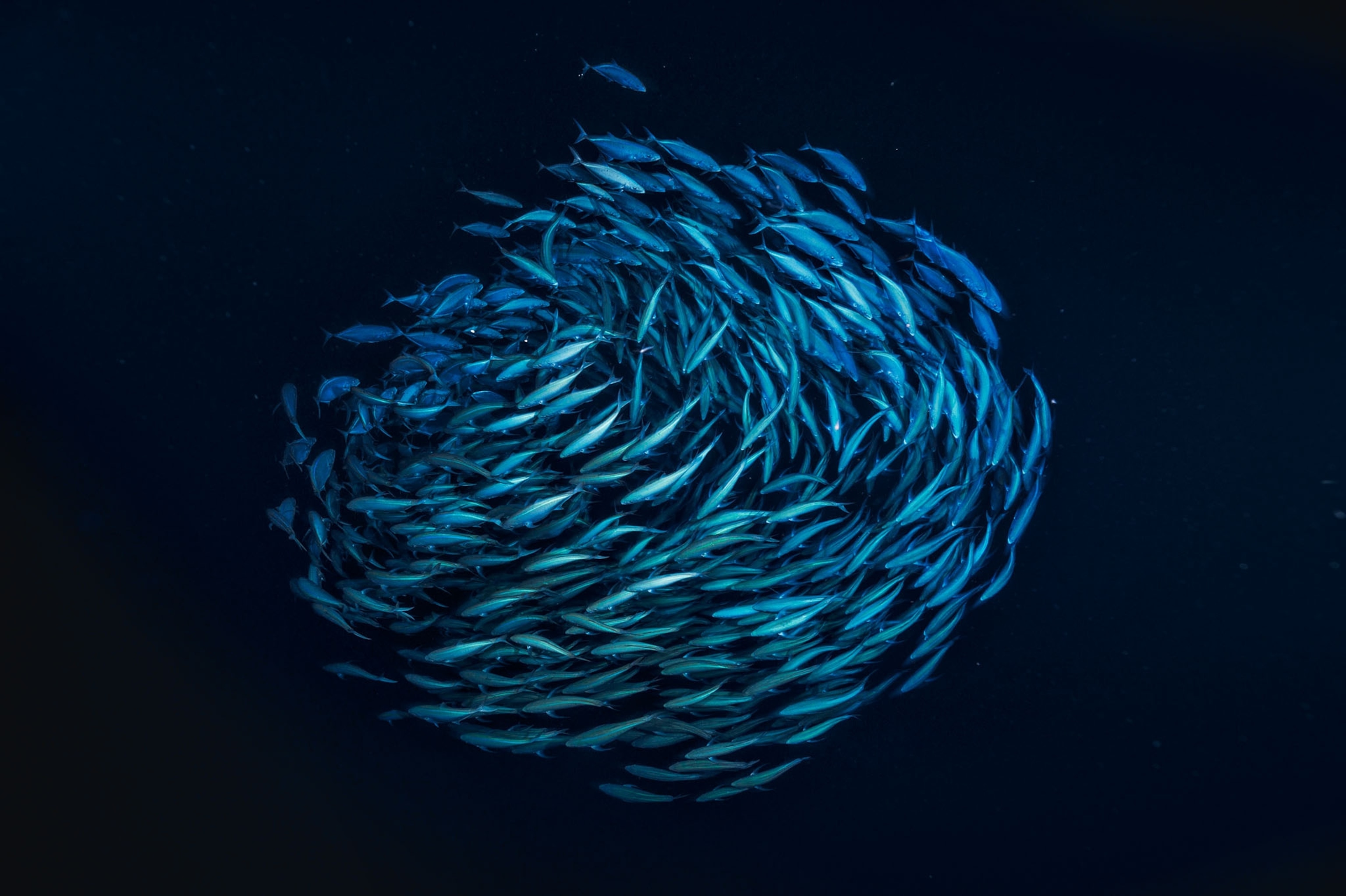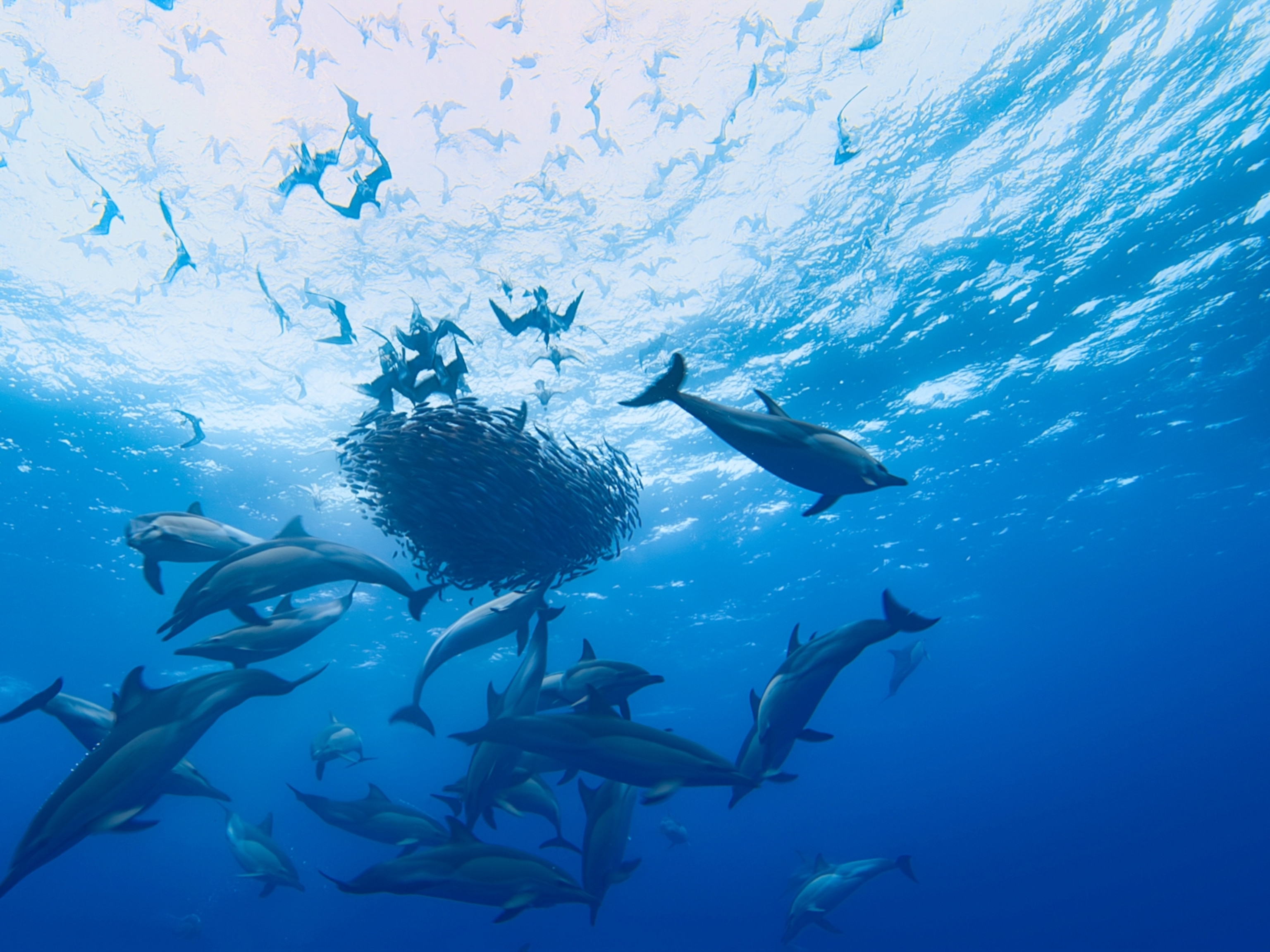
I can almost feel the sizzle of energy as sunlight, carbon dioxide, and water work the magic of photosynthesis while I drift, wrapped in a golden curtain of sargassum, just off Bermuda. I revel in the sensation and am thrilled to see tiny bubbles of oxygen, a by-product of photosynthesis, rise to the surface and join the oxygen produced by trillions of diatoms, blue-green bacteria, and other phytoplankton in the surrounding ultraclear water.
As a living laboratory, the Sargasso Sea—with its masses of sargassum and their cargoes of lilliputian creatures—has yielded important findings about how and why the ocean matters to everyone, everywhere, all the time.
It was in 1986 that Prochlorococcus—Earth’s smallest and most numerous photosynthetic organisms—were discovered in the Sargasso. Now known to occur globally, they churn out as much as 20 percent of the oxygen in the atmosphere. Seaweed and microscopic organisms provide oxygen for life in the sea and more than half the oxygen in the air we breathe. The carbon dioxide they capture is transformed with water into sugar, helping to fuel the complex ocean food webs that culminate in tuna, sharks, whales—and us.

Zoologist William Beebe and engineer Otis Barton, diving in a small submersible in the Sargasso Sea near Bermuda during the 1930s, observed life-forms that exist as much as half a mile deep by day and swim toward the surface at night to feed on phytoplankton, drifting seaweed—and one another. These migrating hordes of small fish and invertebrates, the largest concentrations of animals on Earth, now figure prominently in climate science as “blue carbon”—carbon dioxide captured in the tissues of creatures smaller than the dots on this page and as large as blue whales.
On land, forests also sequester the carbon dioxide that contributes to the planet’s warming, but terrestrial environments occupy far less space than the living ocean. In the Sargasso Sea, at least 14 major groups of animals live on or swim among the floating forests of seaweed. Near Bermuda, biologist Laurence Madin has found that many in a single haul of plankton.
For decades, currents in the Sargasso Sea have been assessed, its temperature and water chemistry measured, and its migrating wildlife documented. The findings have shed light on the ocean’s role in governing climate and weather, and the processes that underpin our existence.

The Sargasso also bears evidence of harsh human impacts that are occurring globally, from waste dumping to illegal, unreported, and unregulated fishing. In 2010 a coalition working with the Bermuda government formed the Sargasso Sea Alliance, replaced in 2014 by the Sargasso Sea Commission. Our mission: to protect the Sargasso Sea, using it as a model for what can be done regionally, while the UN seeks to protect the ocean globally.






